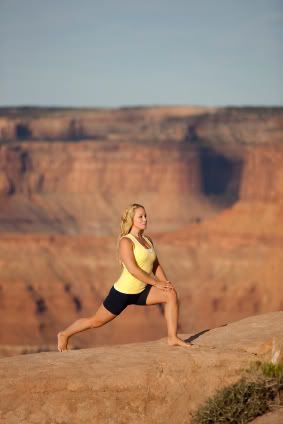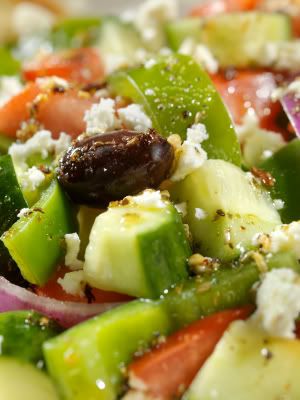Psoas
Published: Wed, 02/29/12
February 29, 2012
Psoas-Mishelle Knuteson, MH.
Think of some major muscles in the body, you may come up with muscles such as the bicep, hamstring or quadriceps. These are well known surface muscles. A muscle that is very important to our overall health, and often never heard of, is the psoas muscle (pronounced so-as). The psoas runs through the pelvic bowl, down over the front of the hip joint, and attaches at the top of the femur (thigh bone). It is the only muscle connecting the spine to the leg.
Think of some major muscles in the body, you may come up with muscles such as the bicep, hamstring or quadriceps. These are well known surface muscles. A muscle that is very important to our overall health, and often never heard of, is the psoas muscle (pronounced so-as). The psoas runs through the pelvic bowl, down over the front of the hip joint, and attaches at the top of the femur (thigh bone). It is the only muscle connecting the spine to the leg.
The psoas is critical for balanced alignment, proper joint rotation, and full muscular range of motion. A constricted psoas can often cause low back pain, knee strain or exhaustion. A chronically tightened psoas continually signals to the body that you are in danger because the physical tension triggers the fight or flight response from the nervous system. This constant tension will eventually exhaust the adrenal glands and deplete the immune system.
The psoas is traditionally considered a hip flexor. Hip flexors are muscles that bring the trunk and leg closer together. Also a posture stabilizing muscle, the psoas assists in straightening the lumbar (lower spine). In actions where one side contracts and not the other, the psoas aids in bending to the side.
Since the psoas is a muscle of flexion, exercises that incorporate those kinds of moves are said to strengthen it. A good exercise is the standing lunge.
Lunge By Steps:
1- Stand with your legs parallel and a straight posture; your tailbone pointing toward the floor, the top of your head reaching for the sky, and your shoulders relaxed.
2- Bend your right knee and step straight back with your left leg onto the ball of your foot. Go as far as you are comfortable, but don't let your right knee (front leg) bend past your toes.
3- Keep your hips even. Think of your hip bones as headlights that have to point forward. Your chest is open, slightly lifted to the sky and your gaze is straight ahead.
4- Rest your hands on your right knee for stability.
5- Straighten your back leg, but don't lock your knee. Let the lift come from the hamstring (back of the leg). Now, if you feel steady, increase the stretch*. But don't do it by sagging into the left hip (common mistake).
 *The way to increase the stretch is to keep your lower ribs and hip bones in the same plane and pull up through the core of the body and abdominal muscles to bring the pelvis up and back, opening the front of the hip joint. Use your abs in a way that feels like you are scooping your tailbone between your legs. This will help protect your lower back.
*The way to increase the stretch is to keep your lower ribs and hip bones in the same plane and pull up through the core of the body and abdominal muscles to bring the pelvis up and back, opening the front of the hip joint. Use your abs in a way that feels like you are scooping your tailbone between your legs. This will help protect your lower back.
6- Hold the stretch about 30 seconds as you breathe deeply. You might think of it as breathing "into the stretch".
7- Release the stretch by supporting some weight on your hands and stepping the back foot forward to parallel legs position.
8- Repeat on the other side.
1- Stand with your legs parallel and a straight posture; your tailbone pointing toward the floor, the top of your head reaching for the sky, and your shoulders relaxed.
2- Bend your right knee and step straight back with your left leg onto the ball of your foot. Go as far as you are comfortable, but don't let your right knee (front leg) bend past your toes.
3- Keep your hips even. Think of your hip bones as headlights that have to point forward. Your chest is open, slightly lifted to the sky and your gaze is straight ahead.
4- Rest your hands on your right knee for stability.
5- Straighten your back leg, but don't lock your knee. Let the lift come from the hamstring (back of the leg). Now, if you feel steady, increase the stretch*. But don't do it by sagging into the left hip (common mistake).
 *The way to increase the stretch is to keep your lower ribs and hip bones in the same plane and pull up through the core of the body and abdominal muscles to bring the pelvis up and back, opening the front of the hip joint. Use your abs in a way that feels like you are scooping your tailbone between your legs. This will help protect your lower back.
*The way to increase the stretch is to keep your lower ribs and hip bones in the same plane and pull up through the core of the body and abdominal muscles to bring the pelvis up and back, opening the front of the hip joint. Use your abs in a way that feels like you are scooping your tailbone between your legs. This will help protect your lower back.6- Hold the stretch about 30 seconds as you breathe deeply. You might think of it as breathing "into the stretch".
7- Release the stretch by supporting some weight on your hands and stepping the back foot forward to parallel legs position.
8- Repeat on the other side.
A healthy functioning psoas guides the transfer of weight from the trunk of the body to the legs. It provides a diagonal support through the trunk, forming a shelf for the vital organs of the abdominal core. In walking, a healthy psoas assists the joints in moving freely and joins with the diaphragm in massaging the spine as well as the organs, blood vessels, and nerves of the trunk, stimulating the flow of fluids throughout the body. A healthy psoas contributes to the sensations of feeling grounded and centered in the body which creates a sense of relaxation and calm that can affect your total well-being.
Mishelle Knuteson is certified in Rapid Eye Technology (RET) an emotional release therapy, teaches classes in The Art of Feminine Presence and a Master Herbalist ~ graduate of The School of Natural Healing. Mishelle currently works as an Educative Master Herbalist (MH) for The School of Natural Healing and as Office Manager of Christopher Publications.
Printable Version: click here
Printable Version: click here
If you missed an article be sure to visit http://www.herballegacy.com and click on Articles. Also, take advantage of David Christopher's Radio Show (see Resource Links below for more information).
Christopher Publications & Newsletters
"Books for your Health & Well-Being"
The
only place where Dr. John R. Christopher's writings are published, with
a hand picked selection of the best books to enhance your natural
healing library.
Christopher Publications Newsletters:
For many years Dr. Christopher published a monthly newsletter that
covered everything from heart troubles to back pain; garlic to alfalfa
and everything in between. These publications were not available for
many years, but Christopher Publications has scanned all of them in and
they are now available for you to download instantly. For more
information or to purchase the newsletters visit: http://www.christopherpublications.com/Newsletters.html.
Greek Salad
2 large tomatoes cut into wedges
1/4-1/2 red onion, thinly sliced
1 cucumber, largely diced
1 cup Kalamata olives (pitted)
4-6 oz of Italian Herb Tofu "Cheese", cubed or crumbled
(see recipe below)
2 Tbls. fresh whole cilantro leaves
Dressing
5 Tbls. extra virgin olive oil
2 Tbls. white wine vinegar (can substitute apple cider vinegar)
1 Tbls. fresh lemon juice
1 tsp. agave
1 Tbls. chopped fresh cilantro
salt and pepper to taste
Serve on top of greens or stuffed into a whole grain pita.
2 large tomatoes cut into wedges

1/4-1/2 red onion, thinly sliced
1 cucumber, largely diced
1 cup Kalamata olives (pitted)
4-6 oz of Italian Herb Tofu "Cheese", cubed or crumbled
(see recipe below)
2 Tbls. fresh whole cilantro leaves
Dressing
5 Tbls. extra virgin olive oil
2 Tbls. white wine vinegar (can substitute apple cider vinegar)
1 Tbls. fresh lemon juice
1 tsp. agave
1 Tbls. chopped fresh cilantro
salt and pepper to taste
Serve on top of greens or stuffed into a whole grain pita.
Italian Herb Tofu "Cheese"
1/8 cup olive oil
1/8 cup water
1/8 cup Apple Cider Vinegar
1 tsp. salt
2 tsp. dried basil
1/4 tsp. dried oregano
1/4 tsp. pepper
1/2 lb of firm tofu
1/8 cup olive oil
1/8 cup water
1/8 cup Apple Cider Vinegar
1 tsp. salt
2 tsp. dried basil
1/4 tsp. dried oregano
1/4 tsp. pepper
1/2 lb of firm tofu
Place all ingredients but tofu in a bowl and whisk together. Add tofu, stir, and let sit for 1-24 hours to marinate. Drain through cheese cloth and cube or crumble.
Printable Version: click here
Printable Version: click here
Herbal Resource Links
- Herbal Legacy - http://www.herballegacy.com - Our free information website
- The School of Natural Healing - http://www.snh.cc - Quality Education since 1953
- Christopher Publications - http://www.christopherpublications.com - Dr. Christopher's books and more
- Christopher Websites - http://www.christopherwebsites.com - Find all Christopher websites and other great resources
- A Healthier You Radio Show - http://www.ahealthieryouradio.com - Free weekly radio show
This newsletter is sponsored by:
The School of Natural Healing: http://www.snh.cc
Christopher Publications: http://www.christopherpublications.com
The School of Natural Healing: http://www.snh.cc
Christopher Publications: http://www.christopherpublications.com
NOTICE: All
information in this newsletter is given out as information only and is not
intended to diagnose or prescribe. For
our official Disclaimer, Biological Individuality, Important Notice & Terms
of Use please see: http://www.herballegacy.com/Disclaimer.html
This newsletter is sent by permission only - you can unsubscribe quickly and easily by clicking the link below.
.

